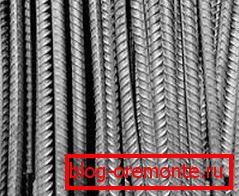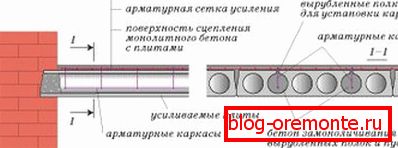What is nabotka and what are the features of the device of
Nabetonka is building up the cross section of a concrete slab in a horizontal plane in order to increase its bearing capacity and increase the strength characteristics of the structure as a whole. This option is often the only solution if it is necessary to strengthen the structure without carrying out large-scale floor replacement works.
But, despite the apparent simplicity, this method of amplification requires certain nuances, which we will consider in this review.

Basic requirements for work
We note right away that not all builders know what the device is and how many criteria should be taken into account when working, so it is important to carefully observe the technology, otherwise the effect will be much lower than planned. It is important to know the following rules:
| What is the gain done for? | The main purpose of the work - the removal of the payload from the plate, the resulting system should work as a monolith |
| How it works | An additional concrete layer contributes to an increase in the shoulder of the internal pair of forces, thereby increasing the carrying capacity |
| Conditions for achieving high results | The real effect is achieved only with perfect adhesion of concrete to the base, any shift negates all efforts. |
| Expediency of application | It makes sense to use this option if it is impossible to solve the problem in other ways, as the requirements for the quality of work are very high. |
Note! It should be remembered that the reinforcement of plates using this method significantly increases the weight of each element, which creates an additional load on all the supporting structures and the foundation of the structure. This factor must be taken into account when repairing old buildings.
For example, consider the following option: if a plate with a thickness of 40 mm is laid on a plate with a thickness of 100 mm, then the bearing capacity index will increase approximately 1.4-1.5 times.

Work technology
As noted above, in order to achieve the best result, it is very important to carefully follow the technological process and carry out work in strict accordance with the requirements that will be set out below.
Using pins or dowels
The nadolny device without any additional holding elements is rather risky, since even a minimal shift of the layers relative to each other removes the effect of the monolith completely. In this case, the bearing capacity will be the sum of the joint deformation of the layer and plate, and this value is much lower.
The work process itself has the following features:
- To achieve the best effect, it is important to use only heavy concrete, grades M250 and higher.. In this case, the strength is fundamental, the price of these options is greater, but the quality is disproportionately higher.
- The second very important element is reinforced reinforcement.. It makes the structure several times stronger, in addition, the reinforcement belt reduces the shrinkage rate, which also contributes to a stronger adhesion of materials and gives additional stability.

- Surface preparation also refers to activities that must be considered. The works are simple, but it is from them that the adhesion of the concrete and the slab depends largely: debris and stains are removed first if present, then it is recommended to blow the surface with compressed air. The last stage is the wetting of the surface, while it is worth remembering that there should be no puddles.
Tip! If you have an industrial vacuum cleaner, then all contamination can be removed with its help, the power of such equipment is usually enough to properly clean the surface from all contamination.

- One of the most common ways to prevent churning is to install pins from small height fittings.. They are inserted into the holes drilled in the plate at regular intervals and act as pins, preventing the plate and the reinforcing layer from moving relative to each other. This option is associated with very time-consuming work on drilling concrete and driving rods.
- There is another, simpler way to prevent layer shearing: at regular intervals, holes of about 5 cm in depth are drilled over the entire surface. In the process of pouring concrete, the solution fills all the voids, which, after solidification, allows you to create peculiar key connections that make the reinforcing layer and the slab a single entity.
Due to the fact that the thickness of the layer can vary within 10 mm, at design a layer of at least 50 mm is laid. On this basis, it is necessary to calculate how much the load on structures will increase, and whether it is advisable to carry out a set of measures.
Creating a reinforced structure
Sometimes none of the above options are suitable due to the fact that the plates are thin-walled and it is rather difficult to put pins in them or make holes for the keys.
In this case there are several options with which you can give additional strength to the concrete structure:
- If there is such an opportunity, then metal supports can be brought under the plates, which either wind up into the walls and become reinforced with struts or are put on racks. Beams are placed in the transverse direction, due to this the load on the span is divided into 4-5 points instead of two.

- Another great way is the opening of several voids along the entire length and the introduction of flat stiffeners into them. This method allows to significantly strengthen the reinforcement and increase the area of contact between the concrete and the slab, because all the opened voids are filled with a solution.

Conclusion
If this review is used as a guideline, then you can avoid many common mistakes. Video in this article will allow to understand some of the nuances even better.